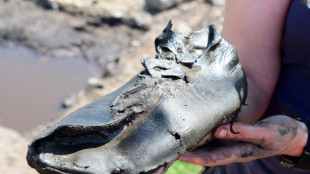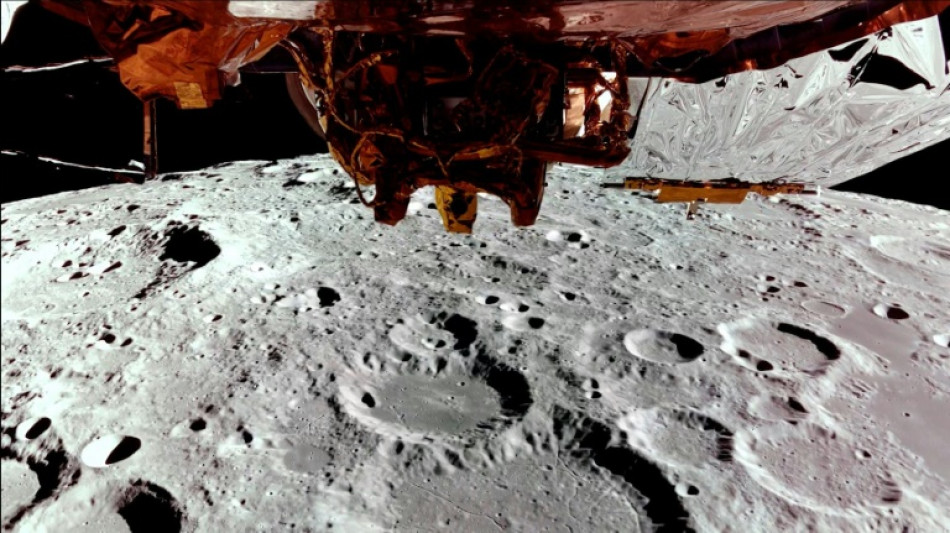
-
 England's James ready for Euros opener with France, says Wiegman
England's James ready for Euros opener with France, says Wiegman
-
Keys latest to fall in Wimbledon wipeout as Alcaraz resumes title bid

-
 Smith and Brook tons lead England revival against India in second Test
Smith and Brook tons lead England revival against India in second Test
-
France praises China Cognac progress, warns of unresolved issues

-
 Australian Open champion Keys stunned at Wimbledon
Australian Open champion Keys stunned at Wimbledon
-
Hamas says holding consultations on Gaza truce proposal

-
 Top gun Pogacar targets fourth Tour de France triumph
Top gun Pogacar targets fourth Tour de France triumph
-
Heavy snow hits Turkey's northeast as southwest burns
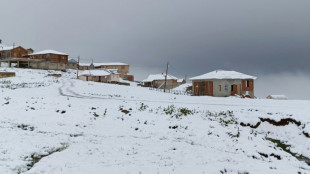
-
 Pakistan building collapse kills 7
Pakistan building collapse kills 7
-
Osaka still dreams of glory despite latest Wimbledon flop

-
 Hamilton on top after opening practice for British GP
Hamilton on top after opening practice for British GP
-
Alcaraz back in action at Wimbledon as Raducanu eyes Sabalenka shock

-
 Court strikes suspension for Nigerian senator who complained of sexism
Court strikes suspension for Nigerian senator who complained of sexism
-
Riquelme leaves Atletico Madrid for Real Betis

-
 Osaka blows chance to reach Wimbledon fourth round
Osaka blows chance to reach Wimbledon fourth round
-
England's Smith stuns India with blistering century in second Test

-
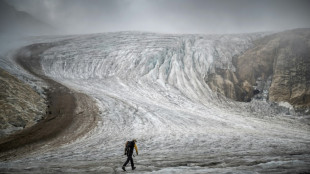 Meltdown: Swiss glaciers hit annual tipping point weeks early
Meltdown: Swiss glaciers hit annual tipping point weeks early
-
Salah 'frightened' to return to Liverpool after Jota death

-
 Wimbledon pays tribute to Jota after Liverpool star's death
Wimbledon pays tribute to Jota after Liverpool star's death
-
Macron to co-chair Ukraine talks with Europe leaders while in UK: Elysee

-
 Dozens hurt in fuel station blast heard across Rome
Dozens hurt in fuel station blast heard across Rome
-
Vingegaard 'stronger than ever' as Tour de France start looms

-
 Russia brushes off talks, launches largest assault on Ukraine
Russia brushes off talks, launches largest assault on Ukraine
-
Stocks, dollar drop as tariff talk dominates

-
 Besiktas take Tammy Abraham on loan from AS Roma
Besiktas take Tammy Abraham on loan from AS Roma
-
Wimbledon defends prize pot as players push for bigger share of profits

-
 Siraj's double strike leaves England reeling in second Test
Siraj's double strike leaves England reeling in second Test
-
Pakistan building collapse kills 6: police

-
 Nico Williams pens new Athletic deal in transfer twist
Nico Williams pens new Athletic deal in transfer twist
-
Russia hits Ukraine with largest barrage of war after Putin-Trump call

-
 China to require EU brandy exporters to raise prices or face tariffs
China to require EU brandy exporters to raise prices or face tariffs
-
Swiss Alps hits annual glacier tipping point weeks early
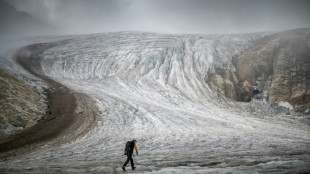
-
 At least five dead in Pakistan building collapse: police
At least five dead in Pakistan building collapse: police
-
Firefighters master one Turkey wildfire as two others rage on
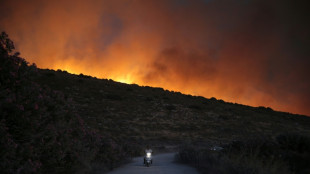
-
 Second day of travel chaos as French air traffic controllers strike
Second day of travel chaos as French air traffic controllers strike
-
Putin hits Ukraine with largest barrage of war after Trump call

-
 Philippines asks Japan's help searching lake for missing cockfighters
Philippines asks Japan's help searching lake for missing cockfighters
-
Rio to host BRICS summit wary of Trump

-
 Trump to sign 'big, beautiful' bill on US Independence Day
Trump to sign 'big, beautiful' bill on US Independence Day
-
Schmidt confident sidelined Wallabies' trio will be fit for Lions

-
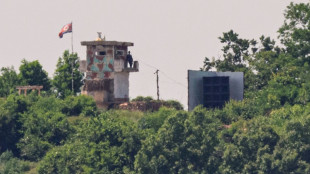 North Korean detained after crossing land border: Seoul military
North Korean detained after crossing land border: Seoul military
-
Bayern stand before PSG in battle of Club World Cup favourites

-
 Record cold grips Argentina, Chile and Uruguay
Record cold grips Argentina, Chile and Uruguay
-
Abidjan dreams of becoming Africa's next cinema hub

-
 Fired in bathrobe: Slovak cultural heads recall their dismissals
Fired in bathrobe: Slovak cultural heads recall their dismissals
-
Scott Barrett says All Blacks not 'disrespected' by France

-
 Alcaraz searches for perfect serve at Wimbledon, Raducanu eyes Sabalenka shock
Alcaraz searches for perfect serve at Wimbledon, Raducanu eyes Sabalenka shock
-
Tour de France: Clash of styles as odd couple duel for title again

-
 Mead eyes Euros repeat for England after emotional rollercoaster
Mead eyes Euros repeat for England after emotional rollercoaster
-
Springboks dream comes true for Congolese refugee Tshituka


Two lunar landings in a week for NASA's private Moon fleet
More than fifty years passed between the last Apollo mission and the United States' return to the lunar surface, when the first-ever private lander touched down last February.
Now, starting Sunday, two more missions are set to follow within a single week, marking a bold push by NASA and its industry partners to make Moon landings a routine part of space exploration.
First up is Firefly Aerospace's Blue Ghost Mission 1, nicknamed "Ghost Riders in the Sky."
After launching in January on a 45-day journey, it is targeting touchdown near Mons Latreille, a volcanic feature in Mare Crisium on the Moon's northeastern near side, at 3:34 am US Eastern time (0834 GMT). Along the way, it has captured stunning footage of the Moon, coming as close as 60 miles (100 kilometers) above the surface.
The golden lander, about the size of a hippopotamus, carries ten instruments, including one to analyze lunar soil, another to test radiation-tolerant computing, and a GPS-based navigation system.
Designed to operate for a full lunar day (14 Earth days), Blue Ghost is expected to capture high-definition imagery of a total eclipse on March 14, when Earth blocks the Sun from the Moon's horizon.
On March 16, it will record a lunar sunset, offering insights into how dust levitates above the surface under solar influence -- creating the mysterious lunar horizon glow first documented by Apollo astronaut Eugene Cernan.
- Hopping drone -
Blue Ghost's arrival will be followed on March 6 by Intuitive Machines' IM-2 mission, featuring its lander, Athena.
Last year, Intuitive Machines made history as the first private company to achieve a soft landing on the Moon, though the moment was tempered by a mishap.
Coming down too fast, one of the lander's feet caught on the lunar surface, tipping it over and causing it to rest sideways -- limiting its ability to generate solar power and cutting the mission short.
This time, the company says it has made key improvements to the hexagonal-shaped lander, which has a taller, slimmer profile than Blue Ghost, and is around the height of an adult giraffe.
Athena launched on Wednesday aboard a SpaceX rocket, taking a more direct route toward Mons Mouton -- the southernmost lunar landing site ever attempted.
It carries an ambitious set of payloads, including a unique hopping drone designed to explore the Moon's underground passages carved by ancient lava flows, a drill capable of digging three feet beneath the surface in search of ice, and three rovers.
The largest, about the size of a beagle, will connect to the lander and hopper using a Nokia cellular network in a first-of-its-kind demonstration.
But "Grace," the hopping drone -- named after computing pioneer Grace Hopper -- could well steal the show if it succeeds in showing it can navigate the Moon's treacherous terrain in ways no rover can.
- NASA's private Moon fleet -
Landing on the Moon presents unique challenges due to the absence of an atmosphere, making parachutes ineffective. Instead, spacecraft must rely on precisely controlled thruster burns to slow their descent while navigating hazardous terrain.
Until Intuitive Machines' first successful mission, only five national space agencies had accomplished this feat: the Soviet Union, the United States, China, India and Japan, in that order.
Now, the United States is working to make private lunar missions routine through NASA's $2.6 billion Commercial Lunar Payload Services (CLPS) program, a public-private initiative designed to deliver hardware to the surface at a fraction of traditional mission costs.
These missions come at a pivotal moment for NASA, amid speculation that it may scale back or even cancel its Artemis lunar program in favor of prioritizing Mars exploration -- a key goal of both President Donald Trump and his close advisor, SpaceX founder Elon Musk.
F.Bennett--AMWN
